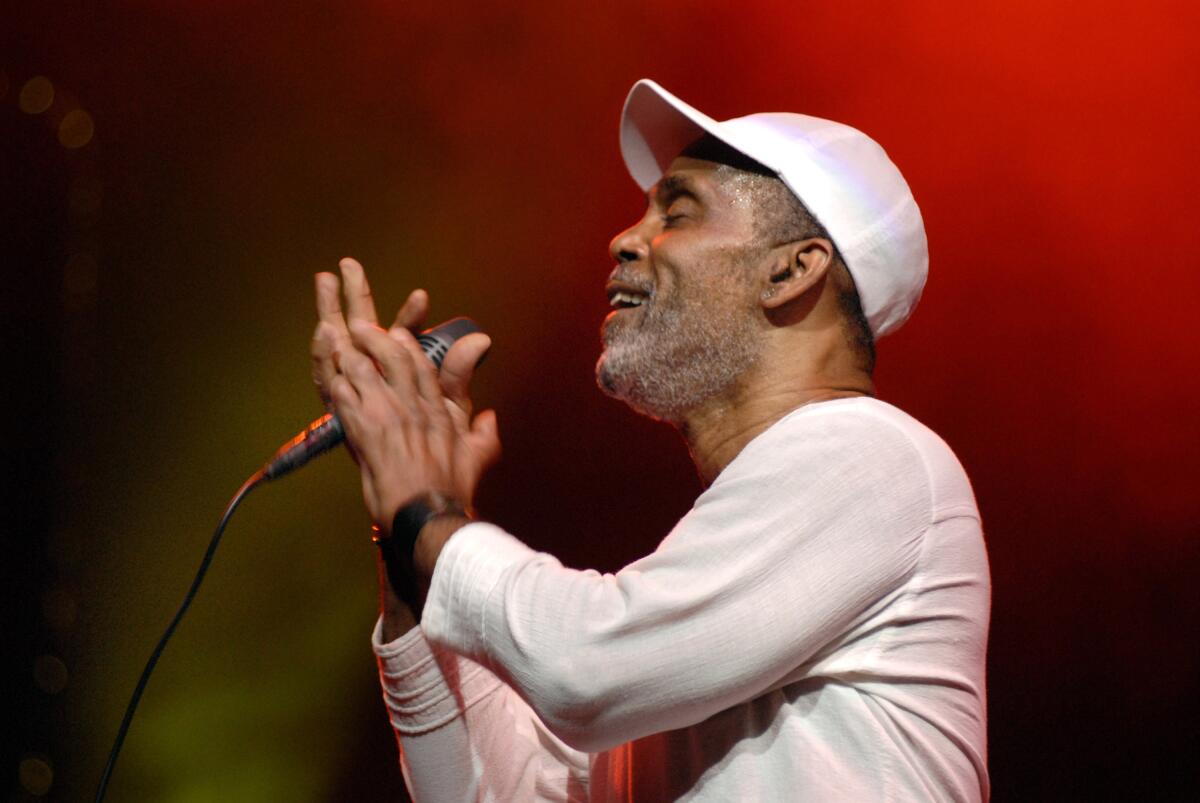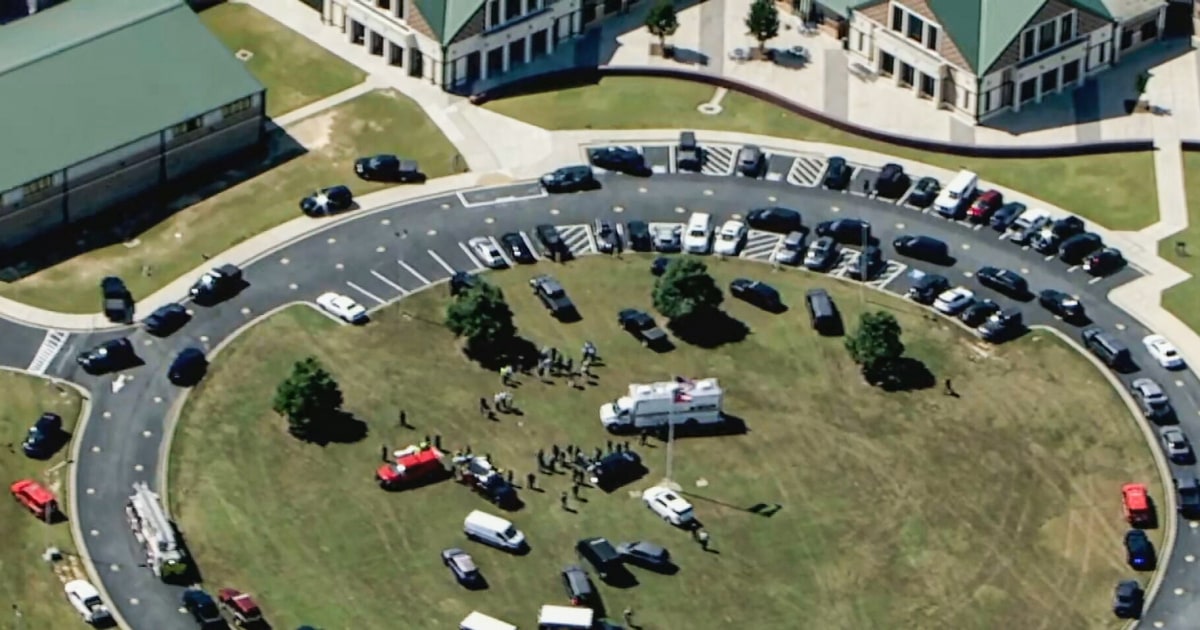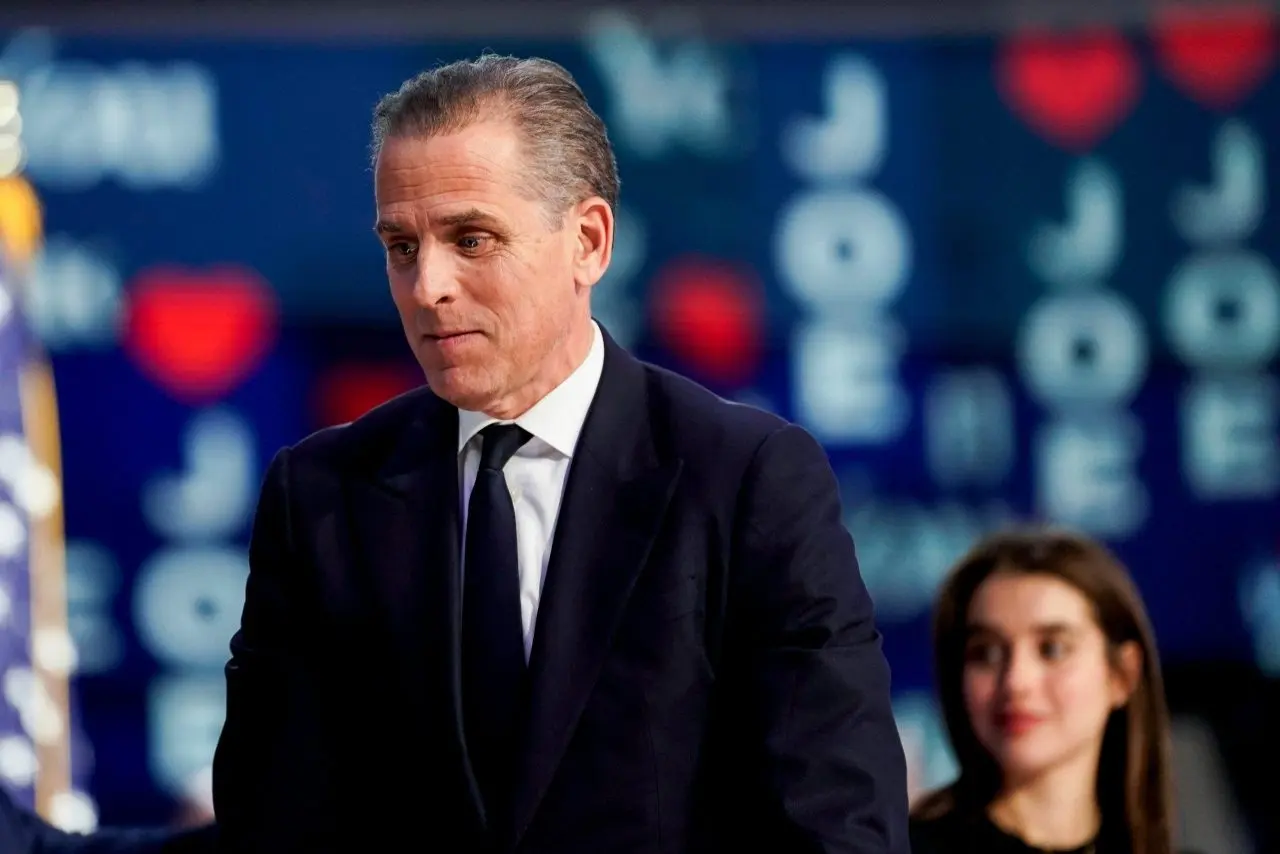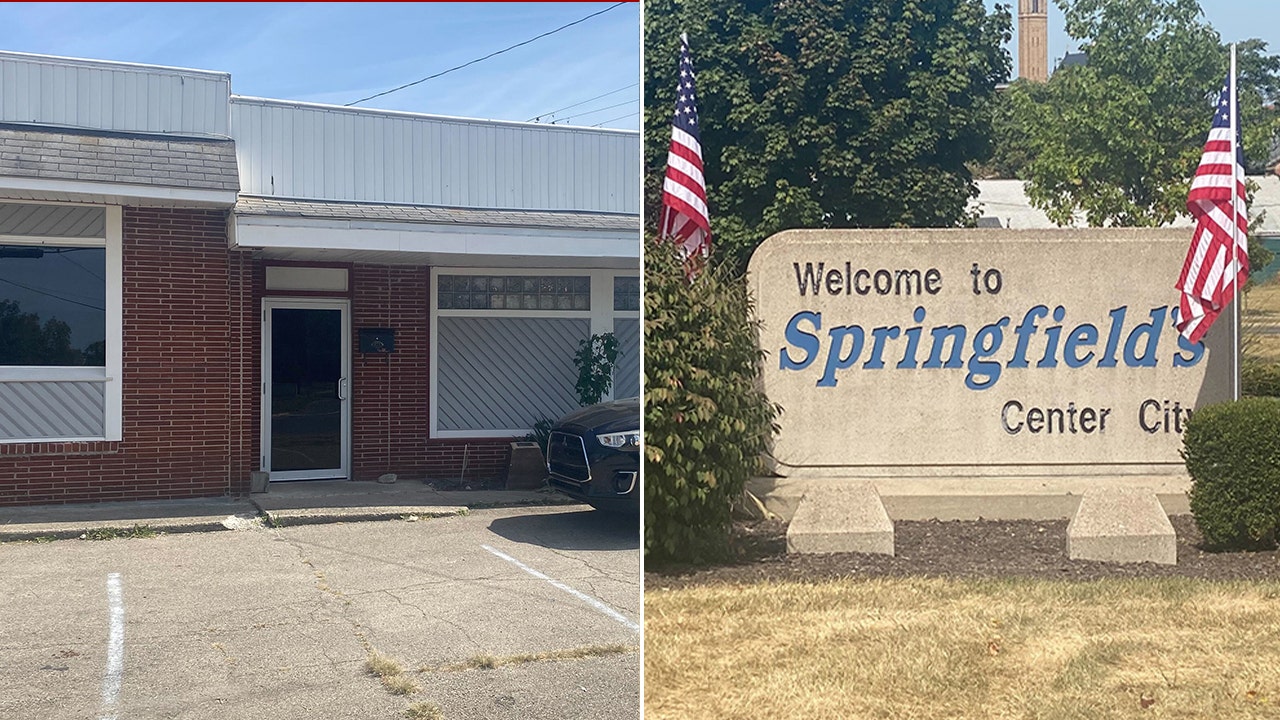Entertainment
Granderson: Soul singer Frankie Beverly's legacy of healing

When Frankie Beverly, lead singer of the soul band Maze, passed away this week, I thought of the audience on his recordings from one November night in 1980 at Saenger Theater. His album “Live in New Orleans” captured more than a concert. It captured a turning point in history.
Opinion Columnist
LZ Granderson
LZ Granderson writes about culture, politics, sports and navigating life in America.
President Carter had lost his reelection bid barely a week earlier. Nearly 60% of Orleans Parish, where Beverly was recording, voted for Carter. The GDP grew a stunning 4.6% during Carter’s only term, but inflation was 13%, as was the poverty rate. His opponent, Ronald Reagan, blamed social programs and welfare recipients for the economic woes. When Reagan first workshopped that rhetoric, in his 1966 campaign for governor of California, the “war on poverty” had just begun; the overall poverty rate was 17%, but for Black America in 1965 it was more than 40%.
By 1980, Reagan and his party had a clear record of dislike for the war on poverty and those it intended to help. He cut more than $22 billion from social programs within his first two years. And when Reagan left the White House, the county’s poverty rate was back up to its highest since — wait for it — 1965.
Listening now, I know that in New Orleans in 1980, Beverly singing “we’ll get through these changing times” was about all of this and the road ahead. His music was both the calm before the storm and the tool needed to find peace in the middle of it. That is why “Joy and Pain” — the fourth track on the live album — sounds less like an R&B concert and more like a revival.
“Sometimes we go through life and things don’t work out the way you want all the time,” he begins. “As you grow older, you kind of learn to live with the joys and pain of life, y’all .… Can I get a witness to that?”
As a child, I thought I understood what Beverly was talking about in “Joy and Pain.” And then, as Beverly said, you grow older. And with wiser eyes you are more able to see just how painful it must’ve been for parents to not be able to feed their children or keep the lights on.
By the time “Live in New Orleans” was released in 1981, nearly 1 in 7 Americans had plunged into poverty, crack was appearing in major cities and the U.S. divorce rate was at its peak. Beverly’s music kept the Black community’s spirits lifted — much in the way Bruce Springsteen and John Mellencamp became voices for the white working class during this same era.

Frankie Beverly performs at the 2019 Essence Festival at the Mercedes-Benz Superdome on Sunday, July 7, 2019, in New Orleans.
(Donald Traill / Associated Press)
Over and over you can be sure
There will be sorrow but you will endure.
Where there’s a flower there’s the sun and the rain —
Oh, but it’s wonderful, they’re both one and the same.
At one point during the recording, Beverly recalls a story in which someone asked why he chose New Orleans to record a live album. His answer was perfect in its simplicity: “Well, why not, ya dig?” Through the long lens of time, we can now see Beverly’s choice of city was the perfect backdrop.
After enslavement came the New Orleans massacre of 1866, the Race Riot of 1900 and other terrorist attacks that left countless dead and destroyed Black businesses and homes. When construction of Saenger began in 1924, there was prosperity in New Orleans, but Jim Crow laws kept Black people disenfranchised.
And then just two months after the theater opened, the Great Mississippi Flood of 1927 devastated the region, causing more than $1 billion in damages — equal to a third of the federal budget at the time.
The flood killed more than 1,000 people and displaced 700,000 others. Many of the victims were descendants of the enslaved who had been forced into sharecropping. About a mile from Saenger is the restaurant where civil rights figures such as Thurgood Marshall and Martin Luther King Jr. would pray and eat as they met with local leaders, strategizing on how to dismantle oppressive laws.
This rich and textured history — each turning point — all contributed to the shaping of the New Orleans community and is reflected in the audience voice heard on that 1980 recording. The hits were established before Saenger. What made the album transformative was confirmation of a shared experience and shared resilience, expressed by those who attended.
The summer “Before I Let Go” first hit the airwaves, the death of Ernest R. Lacy would spark months of protest in the streets of Milwaukee.
Lacy, a 22-year-old Black man, was helping his cousin paint his apartment when he decided to walk to a store to grab a bite to eat. Police confronted him, claiming he fit the description of a rape suspect. Lacy died while in their custody. The woman who had been raped later identified her attacker, and he was convicted. Lacy was innocent.
During times in which it was easier to give in to hate and despair, Beverly advocated for love and resolve with a string of timeless classics that can be heard at any cookout worth fighting 405 traffic to get to. A soothing balm full of wisdom and warmth, Maze concerts were part family reunion, part community therapy.
Beverly received lifetime achievement awards from both BET and the NAACP. His career stretched across eras, his voice led to nine gold records, and his music influenced generations.
But, to the shame of the Recording Academy, he never received a Grammy. The Grammys could still correct that oversight and honor Beverly as he should be. Because it wasn’t talent that limited Beverly’s reach; it was the industry.
Black people had created the blues long before Mamie Smith walked into the studio in 1920 to record what’s considered the first blues record. The success of Smith’s recording led to “race records,” which led to Billboard having a list of the “most popular records in Harlem” in the 1940s.
Motown was ignored during award season for decades. By 1985, the American Music Awards had landed on a “Favorite Black Single” category as a way to keep everyone happy. It was decades after decades of trying to contain something as organic as music, like forcing an amoeba to hold a shape.

R&B legend Frankie Beverly is retiring from his post as the lead singer of ‘Maze’ after a farewell tour kicking off in March.
(Frank Mullen / Associated Press)
It’s still a struggle for the industry — so much so that the nation was riveted early this year when Tracy Chapman took the stage with Luke Combs and together, with the help of a story about poverty in America, they reminded us all that music was never meant to keep us apart.
It’s there to hold us together.
Beverly understood that as well as anyone.
@LZGranderson

Movie Reviews
'Ronny' movie review: Solid performances let down by illogical plot

Director:Gurutej Shetty
Cast:Kiran Raj, Radhya R, Sameeksha, Ravi Shankar, Yash Shetty, Apurva
‘Ronny’ is a predictable gangster drama that follows a familiar narrative arc. With an ambitious young hero, a ruthless underworld don, two female leads, and a dash of comedy, the film’s climax is never in doubt. While it delivers on the genre’s conventions, ‘Ronny’ offers little in terms of originality or surprise.
Raghava (Kiran Raj) enrolls in an acting institute, driven by his ambition to become a star in the Kannada film industry. There, he meets his classmates Anjali and Ghouli, the son of a notorious underworld don named Kali. When Ghouli sets his sights on Anjali, Raghava unexpectedly kills him, sparking a vengeful pursuit by Kali.
In prison, Raghava takes out Ghouli’s associate after a failed attempt on his life and is renamed Ronny. Upon his release, he crosses paths with Supreetha, an art enthusiast.
The story unfolds as a gripping tale of fate, entwining the lives of Raghava, Kali, and Supreetha in a complex web of revenge and love.
The first half meanders, hindered by a forced song and slow pace. But the film picks up steam post-interval, delivering intense moments and unexpected twists. The climax is particularly evocative, making up for the earlier sluggishness.
The film stumbles with logical inconsistencies. Raghava’s arrest is questionable. Supreetha’s silence about her encounter with Ronny at Nandi Hills and her subsequent stay at his residence are unexplained. The police commissioner himself showing up to arrest Ronny defies logic.
Manikant Kadri’s music, Sachin Basrur’s background score, and Raghavendra Kolar’s cinematography and stunts deserve praise. Kiran Raj is convincing as Ronny, and the supporting cast members slip comfortably into their roles.
Despite some narrative missteps, the film’s technical merits and performances make it an average watch.
Watch only if you love gangster dramas.
Published 14 September 2024, 04:31 IST
Movie Reviews
‘Eden’ Review: Jude Law Leads a Starry Cast Marooned in Ron Howard’s Odd and Off-Putting Survival Tale

It would be completely understandable that Ron Howard, having directed more than two dozen genre-tripping films spanning six decades, would want to shake things up a bit by jumping into something outside his proven comfort zone.
And it would be equally logical that the vehicle to take him there would be a certifiably bizarre but true account of a 1920s German philosopher who sets up an experimental society with his lover/disciple on a remote island in the Galápagos, only to have it all implode when opportunists come and crash the party.
Eden
The Bottom Line Mighty far from paradise.
Venue: Toronto International Film Festival (Gala Presentations)
Cast: Jude Law, Ana de Armas, Vanessa Kirby, Daniel Brühl, Sydney Sweeney
Director: Ron Howard
Screenwriter: Noah Pink
2 hours 9 minutes
But despite all the intriguing possibilities of the concept and a game, international cast including Jude Law, Ana de Armas, Vanessa Kirby, Daniel Brühl and Sydney Sweeney, Eden, handed its world premiere at Toronto, never finds its happy place. The prevailing overwrought tone lands more cartoonish than satirical, while a protracted running time accentuates the film’s deficiencies.
The movie certainly starts promisingly enough, efficiently setting up the life and times of Dr. Friedrich Ritter (Law). In 1929, he flees German society and its bourgeois values to create a new home on the remote island of Floreana, living off of limited natural resources with his survivalist partner, Dore Strauch (Kirby).
But the couple’s solitary existence is interrupted by the arrival of Heinz Wittmer (Brühl), a World War I vet with a younger new wife, Margaret (Sweeney), and a son, Harry (Jonathan Tittel). They have been following Ritter’s dispatches and hope the land’s virgin air might cure Harry’s tuberculosis, just as it appears to have kept Strauch’s multiple sclerosis under control.
Feeling less than hospitable, Ritter and Strauch glare at the newbies with their safari shorts and butterfly nets, figuring they won’t make it until the first rains.
But while the family prove surprisingly resilient, building a home for themselves and their soon-to-be newborn, their co-existence is freshly threatened by the entrance of the Baroness Eloise Bosquet de Wagner Wehrhorn (de Armas), accompanied by a pocket harem of young men, who intends to build the world’s most exclusive resort on the rocky terrain.
It soon becomes clear that the Baroness, with her long strand of pearls and a hard-to-place accent that sounds much like Anna Delvey’s, is a scheming instigator. She proceeds to pit the inhabitants against each other, leading to an inevitable descent into madness.
Despite an inspired setup that might suggest Werner Herzog’s Gilligan’s Island, Howard and screenwriter Noah Pink (Tetris) shipwreck the Queensland-shot vehicle in a mishmash of styles. Neither quite satire nor thriller nor murder mystery, the film cries out for a sharper attack.
It’s the kind of tale that would have been a natural fit for the likes of Mike White, whose acutely devious White Lotus sensibility would have been right at home here. But although Howard delivers some effective set pieces, notably a harrowing sequence in which Margaret must deliver her own baby, little about Eden feels consistent.
As a result, the performances are likewise hit and miss. De Armas does the best she can with her femme fatale role, even though she ultimately lacks the satirical chops of a more seasoned character actress to really hit it home.
Meanwhile, Law (so commanding in another TIFF offering, The Order) grows so tiresome as the smug, pontificating Dr. Ritter that by the time he eventually loses his mind, you can’t blame it for wanting to get away.
Only Sweeney manages to retain the viewer’s sympathy and her character’s sanity as the decent pillar of stability that is Margaret — who, as the end credits and archival footage reveal, would remain on the island until her death in 2000, and where her descendants host tourists at Wittmer Lodge to this day.
Now that premise sounds more like something in Howard’s wheelhouse.
Full credits
Venue: Toronto International Film Festival (Gala Presentations)
Production companies: Imagine Entertainment, AGC Studios
Cast: Jude Law, Ana de Armas, Vanessa Kirby, Daniel Brühl, Sydney Sweeney
Director: Ron Howard
Screenwriter: Noah Pink
Producers: Ron Howard, Brian Grazer, Karen Lunder, Stuart Ford, William M. Connor, Patrick Newall
Executive producers: Miguel A. Pelos Jr., Zach Garrett, Noah Pink, Mathias Herndl, Namit Malhotra, David Taghioff, Masha Maganova, Matt Murphie, Craig McMahon
Director of photography: Mathias Herndl
Production designer: Michelle McGahey
Costume designer: Kerry Thompson
Music: Hans Zimmer
Editor: Matt Villa
Sales agents: CAA, AGC Studios
2 hours 9 minutes
Entertainment
Review: 'Look Into My Eyes' is a compassionate profile of psychics, not out to scam but connect

As Lana Wilson’s documentary about psychics “Look Into My Eyes” opens, a gray New York sky hovers above a nondescript building. A modest yellow glow comes from one high-storied window. Inside, a woman begins telling someone off-camera about a girl’s tragic death, something she’s held onto tightly for 20 years. There’s a question she still needs answered. How is she?
Wilson returns to that exterior building shot at the end of the film, after we’ve witnessed several more interactions and gotten to know a handful of these psychics, many of whom carry around their own unresolved aches. But at the end, the image somehow feels different: That lit window against the big, hard, anxious city conveys a hopeful warmth. It looks comforting.
Coming to “Look Into My Eyes” as a skeptic is only natural, because you’re human. The world of clairvoyants is bizarre and suspicious, and we love docs that pull back the curtain. What’s also universal, however, in these years of global trauma, is the need to address what ails us, and it’s this perspective that informs Wilson’s approach — the same one that imbued grace to her previous documentaries “After Tiller,” about abortion doctors, and “The Departure,” about a turmoil-ridden monk.
Something diverting and affecting emerges from Wilson’s close, considerate and not unskeptical hang with a diverse handful of New York psychics plying their wares and living their lives. You end up believing — not in paranormal powers or some mystical gift, but in the modest building blocks of reaching out. These tucked-away transactions of faith and performance offer, in their own way, a kind of solace.
Wilson’s observational mode is respectful, the multi-camera set-up fixed on hushed, awkward-at-first exchanges as if capturing an important interview where subject and questioner have equal standing. The faces of the clients have nervous smiles as they ask a question or await one, or receive a declaration of a spiritual presence. The psychics, too, betray their own apprehension as things come to them. Will it spark an emotion, bring them nearer to the source of the pain? Or will it go wrong? It comes off as a first dance, where both parties want to avoid stepping on toes or actively leading, yet find a rhythm that matches the music and, most importantly, feels good.
The exchanges often seem like bids for being heard, where all that’s being sought is a kind, sensible word from the friendly face in front of you. An adoptee wants details about the Chinese birth parents who gave her up. (They were greedy; being adopted can be hard.) A tightly wound woman fears her defiant dog doesn’t like her. (He senses that worry; be calmer.) A young Black man fixates on having learned about his ancestor’s slave price. (Focus on defining your own freedom.)
That assuaging goes both ways, though. The psychics’ own backstories of anguish and loneliness — unsurprisingly, they’re almost all former or still-striving actors — invariably tinge the kind of healing messages given: that a person is unique, that someone can’t change the past, that a lost loved one accepts them, that recognition is just around the corner. Some of the psychics’ lives seem, frankly, precarious, and by a certain point, we glean, quite movingly, that in these sessions, they’re soothing themselves as much as their clients.
In interviews, Wilson can be heard off-camera, gently probing: Is this essentially improv? Their replies aren’t defensive — the psychics rely on an affable confidence in not knowing exactly what is going on, but that something is. As one of them adds, “If it resonates, it doesn’t really matter.”
Human connections are gifts, imagination is powerful and empathy isn’t a trick. These are the things “Look Into My Eyes” patiently communicates to us from its watchful perch. What these freelance healers do may not be professional therapy. But the sensitive, intimate outlet shown in Wilson’s compassionate documentary — one of the year’s best — lets us put our mistrust aside to consider what can be deeply felt from a pretense accepted between willing, receptive souls.
‘Look Into My Eyes’
Rating: R, for language
Running time: 1 hour, 44 minutes
Playing: In limited release Friday, Sept. 13
-

 World1 week ago
World1 week agoMeloni says 'we are making history' as Italy’s FDI reviews progress
-

 World1 week ago
World1 week agoHow Venezuela’s recent history can inform its present-day election crisis
-

 World1 week ago
World1 week agoFrontex chief: NGO rescue ships don't embolden Mediterranean migration
-

 News1 week ago
News1 week agoGeorgia school shooting live updates: Casualties reported at Apalachee High School, suspect in custody
-

 World1 week ago
World1 week agoIsraeli forces using ‘war-like’ tactics in occupied West Bank: OCHA
-
Business1 week ago
Beverly Hills is dragging its heels on a new building. The governor says: Build it
-

 Politics1 week ago
Politics1 week agoTrump, Kamala aiming for the middle with varying degrees of success
-

 Politics1 week ago
Politics1 week agoHunter Biden's criminal tax trial begins with jury selection in California




:max_bytes(150000):strip_icc():focal(958x437:960x439)/John-Legend-091324-cf8ae311f1394f56b7da19a06140115f.jpg)











